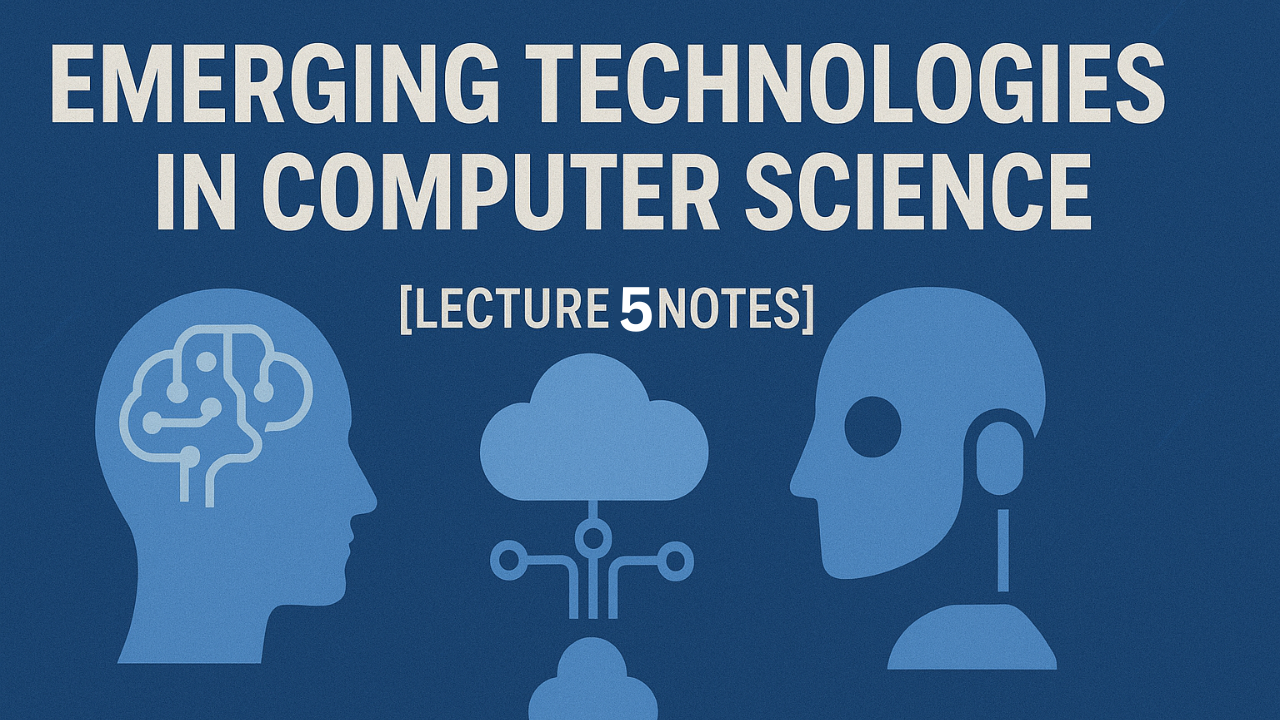Definition
Emerging technologies like Artificial Intelligence (AI) and the Internet of Things (IoT) are advanced technologies that are rapidly changing the way we live, work, and interact. While they provide many benefits, they also bring certain risks and challenges that need to be addressed.
Example: AI-powered virtual assistants can automate daily tasks, while IoT devices in homes provide intelligent control over lighting, temperature, and security.
Implications of AI and IoT
1. Risks and Challenges
Data Privacy
AI and IoT devices collect large amounts of data. Personal and sensitive information can be misused or accessed by unauthorized users.
Example: Smart home devices recording daily routines could leak personal info if hacked.
Extra Notes: Organizations must implement encryption, secure storage, and strict access controls to protect user data. Users should also be aware of permissions and privacy settings of IoT devices.
Algorithmic Bias
AI systems are trained on data. If the data has biases, AI can make unfair decisions in areas like hiring, lending, or law enforcement.
Example: A recruitment AI may favor one group over another if past hiring data is biased.
Extra Notes: Bias mitigation involves using diverse datasets, auditing algorithms, and transparency in AI decision-making. Bias in AI can reinforce societal inequalities if not carefully managed.
Cybersecurity Threats
IoT devices can be vulnerable to hacking, malware, or unauthorized access.
Example: A hacked smart car or security camera can compromise safety.
Extra Notes: Protecting IoT devices requires strong authentication, software updates, and awareness of common cyber threats. Cybersecurity training for users is equally important.
Infrastructure and Adoption Challenges
- High-speed internet and reliable networks are required for optimal performance.
- Initial costs for deploying AI and IoT systems can be high.
- Ensuring energy efficiency and managing e-waste is critical for sustainable technology adoption.
2. Policy and Regulatory Measures
Governments and organizations implement rules and standards to reduce risks:
- Data Protection Laws: Protect personal information. Example: GDPR in Europe ensures secure handling of data.
- Ethical Guidelines: Ensure fairness, transparency, and accountability in AI systems. Example: IEEE ethical standards for AI development.
- Bias Mitigation Standards: Identify and reduce biases in AI training and predictions. Example: Using diverse and representative datasets.
- Security Standards: Protect IoT devices through updates, encryption, and secure authentication. Example: Using strong passwords and encrypted communication for smart home devices.
- International Collaboration: Countries work together to enforce global security and ethical standards for emerging technologies.
3. Societal Impact and Adaptation
Daily Life
AI and IoT make life easier and more efficient:
- Smart thermostats adjust home temperatures automatically.
- Wearable health monitors track vitals and notify medical professionals in emergencies.
- Connected home security systems offer remote monitoring and control.
Work Environments
AI and IoT automate tasks, improve efficiency, and support data-driven decisions:
- IoT sensors in factories monitor equipment and reduce downtime.
- AI-driven analytics help managers optimize workflow and resource allocation.
- Automation allows employees to focus on creative and strategic work.
Society at Large
Emerging technologies help solve big problems:
- Smart cities use IoT to reduce traffic congestion, manage energy consumption, and improve public services.
- Healthcare systems leverage AI for predictive diagnostics and treatment optimization.
- IoT in agriculture increases crop yields and resource efficiency through precision farming.
MCQs – Emerging Technologies
- What are emerging technologies?
a) Old technologies that are no longer used
b) Technologies that are changing the way we live and work ✅
c) Manual tools used in industries
d) None of the above - Which of the following is a risk associated with AI and IoT?
a) Data Privacy issues ✅
b) Increased battery life
c) Reduced internet speed
d) Better graphics in games - Algorithmic bias occurs when:
a) AI runs faster than usual
b) Training data has biases causing unfair outcomes ✅
c) IoT devices connect to Wi-Fi
d) AI models are used in gaming - Which law protects personal data in Europe?
a) GDPR ✅
b) HTTP
c) TCP/IP
d) SMTP - Strong passwords, encryption, and software updates are measures to:
a) Improve device design
b) Reduce risks in IoT ✅
c) Make AI faster
d) None of the above - Which of the following is an example of AI and IoT impact in daily life?
a) Smart thermostats
b) Wearable health monitors
c) Connected security systems
d) All of the above ✅ - AI and IoT in workplaces help by:
a) Automating repetitive tasks ✅
b) Reducing efficiency
c) Increasing bias automatically
d) Disconnecting devices - Smart cities use IoT to:
a) Reduce traffic and manage energy efficiently ✅
b) Increase pollution
c) Stop internet connections
d) None of the above - Why are ethical guidelines important in AI?
a) To make AI work faster
b) To ensure fairness, transparency, and accountability ✅
c) To slow down data processing
d) To connect more devices - Societal impact of AI and IoT includes:
a) Solving climate change and urban management problems ✅
b) Only playing video games
c) Reducing battery life of devices
d) None of the above
Lectures
Related Posts
- AI Algorithms and Techniques
- Top 10 Programming Languages in 2025
- How AI Will Replace and Create Jobs by 2030
Frequently Asked Questions (FAQs)
Technologies like AI, IoT, blockchain, AR, and VR that are rapidly evolving and transforming industries and society.
Data privacy issues, algorithmic bias, cybersecurity threats, and infrastructure limitations.
Through smart home devices, wearable health monitors, and automated systems that improve convenience and efficiency.
They ensure ethical use, data privacy, security, and fairness in AI and IoT systems.
